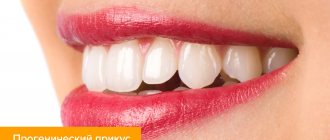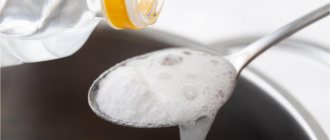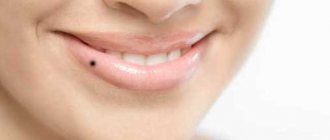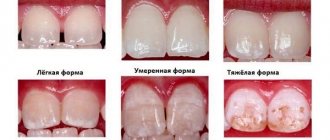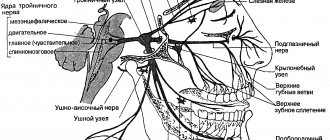July 18, 2011
Fluoride is found in water, foods, and even soil in the form of minerals called fluorite and fluorapatite. However, most often a person encounters industrially produced fluoride compounds, which are added to a variety of products to protect teeth.
However, fluoride doesn't just save teeth. Fluorine compounds are included in some blood substitutes because they are harmless to the body and have a good ability to dissolve oxygen and other gases. Other organofluorine compounds are found in artificial heart valves.
Why is it needed?
The main role of fluoride in maintaining human health is maintaining the health of tooth enamel
and
preventing caries
.
Bacteria that live in the mouth feed on sugars in food and produce acid that erodes enamel. Fluoride prevents this destruction by preserving minerals in the enamel. It is able to accumulate in already damaged areas of enamel and strengthens it - this process is called remineralization
. Together with calcium and phosphorus, fluoride also protects bones from the development of osteoporosis. Fluoride also helps the body absorb iron.
Top 10 products necessary for children
There is no need to remind children about the importance of fluoride. A growing body, like no other, needs this microelement to form healthy bones and teeth, strengthen enamel and prevent dental diseases.
Fluoride deficiency, like calcium, is fraught with serious problems in the development of children: from curvatures in the spine to loss of vision.
But this does not mean that a child from an early age must be fed with dietary supplements containing F. The sources of nutrients for children should be only natural products. An excess of the mineral is also not the most pleasant thing that can happen to a person. Consumption of more than 0.5 mg of fluoride per 1 kg of a child’s weight causes fluorosis (manifested by white and dark spots on tooth enamel). A large overdose causes aching pain in the bones, stains on the teeth (white and brown). The same signs of fluoride poisoning can occur in adults. But in addition to everything else, they also have nodular joints, rapid aging of bone tissue, the appearance of wrinkles and the development of scleroderma (the formation of hard patches of skin).
When compiling a list of foods rich in fluoride, it is first important to remember water, which is the best source of the mineral. It is also important to introduce tea, nuts, sunflower seeds, fruits and vegetables into the children's diet. In particular, focusing on carrots, turnips, beet tops, garlic, spinach, and leafy greens.
Best sources of fluoride for children:
- Tea. This product can be introduced into the diet of children from a relatively early age.
- Pickles. A pickled cucumber added to a salad will provide your child with a significant portion of fluoride.
- Grape juice. This drink, beloved by many, will also take care of the required amount of F in the child’s body. Of course, we are talking exclusively about healthy juices, without preservatives and chemical additives.
- Spinach. This, as well as other green leafy vegetables, will give the child strength and will serve as a source of not only fluoride, but also most of the micro- and macroelements and vitamins necessary for a growing body.
- Tomatoes. All foods that contain tomatoes contain fluoride. Salad or tomato juice is exactly what children need.
- Carrot. Cooked without salt, but with a small addition of vegetable oil, it is a nutritious side dish or salad for a snack. It is important that this orange vegetable is also a powerful source of carotene, which is responsible for visual acuity and the proper functioning of internal organs.
- Orange juice. It's hard to find a child who doesn't like this sweet and sour vitamin drink. If you don’t have a food allergy to citrus fruits, you can pamper your children with fresh orange juice at least several times a week and be sure that they have received many essential nutrients, including vitamin C, a well-known antioxidant and immune protector.
- Asparagus. Serve whole, cut into pieces or puree. It doesn’t matter in what form, the main thing is that the child eats a portion of this healthy vegetable, rich not only in fluoride.
- Beet. Borscht, salads, juices... Prepare whatever your imagination allows from this vegetable. And as often as possible. Beets are a real storehouse of vitamins and minerals that are vital for people at any age.
- Prunes. It can be eaten whole, in compotes, or as an ingredient in desserts - in any case, it will benefit the body.
Important note. Children, especially at an early age (up to 2 years), are often prone to food allergies. Therefore, you should introduce any of these products into your diet slowly, carefully and in small portions. Only after the body gets used to the new food and portion can the frequency of taking a particular product be increased. Don't neglect this rule! Any product should provide benefits and not cause health problems.
As it turns out?
Fluoride can enter the body through topical use
of toothpastes, rinses and special dental preparations containing it.
They are applied directly to the teeth and are actively absorbed by the enamel. It is especially important to use such drugs in young children – during the period of growth and formation of permanent teeth. They are also needed by adults - with the development of caries, smokers, lovers of sweets and those for whom dentists perform dental restoration, as well as implantation of implants or installation of crowns and bridges. But fluoride can also be obtained through food
- from foods rich in it or through
drinking water
. It is absorbed in the digestive tract, enters the bloodstream and is absorbed by the tissues of teeth and bones. People receive most of their fluoride from water and about 20 percent from food.
SanPiN standards for fluorides:
In Russia, according to SanPiN 2.1.4.1074-01, the maximum permissible fluorine content in water is 1.5 mg/l.
SanPiN 2.1.4.1116-02 “Drinking water. Hygienic requirements for the quality of water packaged in containers. Quality control"
classifies bottled water with fluoride concentrations from 0.6 mg/l to 1.2 mg/l as the highest category. Regulatory requirements for baby food water are even stricter. The fluoride concentration in such water should not exceed 0.7 mg/l.
You can order a fluoride water test by filling out the appropriate form here or by calling.
Fluoride testing is carried out in each of the analyzes, starting with the “optimal” one, among those presented on our website vodalab
What if it's not enough?
The main signs of fluoride deficiency in the body are the active development caries
.
of periodontal disease
appear - inflammation and destruction of the gum tissue around the tooth.
This disease is caused by the activity of harmful microorganisms living in the oral cavity, which is usually suppressed by fluoride. Also, with a lack of fluoride, bone tissue begins to deteriorate - osteoporosis
.
However, if you consume large amounts of fluoride-containing products and products, over time, a change in the color of the enamel may occur - fluorosis
. And in more serious cases, there is a decrease in mobility and pain in the joints - skeletal fluorosis.
Benefits of Fluoride in Toothpaste and Other Oral Care Products
Today, experts consider fluoride-containing dental products to be the first line of defense against dental caries [15]. The range of such products is wide. These include:
- toothpastes and mouth rinses;
- specialized and professional fluoride-containing dental preparations - varnishes, filling materials, special solutions.
It has been established that caries in the initial spot stage is amenable to remineralizing therapy, in which the surface layer of the affected enamel is restored [4]. It uses professional preparations containing a high concentration of fluoride, which are applied only in the dentist’s office, in combination with fluoride toothpastes and rinses for home use [4]. To prevent caries, experts recommend that adult toothpaste contain at least 1450 ppm of fluoride [16]. Daily use of such toothpaste increases the mineralizing potential of saliva and promotes the incorporation of minerals into weakened tooth enamel. At the same time, it is important to exclude the ingestion of any fluoride-containing products due to the risk of excess fluoride entering the body and the development of fluorosis [17].
Despite the high effectiveness of such products, the fluoride content in toothpaste for young children carries a certain amount of risk. This is due to the fact that a child may swallow the toothpaste when brushing his teeth, which may result in exceeding the daily fluoride intake. Therefore, it is very important to teach children proper oral hygiene and explain that toothpaste should be spat and not swallowed. It is necessary that young children have an adult with them while brushing their teeth to help the child and monitor the correctness of his actions. This way, parents can be sure that the paste is being spat out. If the risk of ingestion is still high, for example, the child is unwell, it is better to use specially formulated children's toothpastes that do not contain fluoride.
List of sources
- Kono K. Health effects of fluorine and its compounds. Nihon Eiseigaku Zasshi. 1994 Dec;49(5):852-60. https://www.ncbi.nlm.nih.gov/pubmed/7830341 (access date: 02.22.2020).
- Medjedovic E, Medjedovic S, Deljo D, Sukalo A. IMPACT OF FLUORIDE ON DENTAL HEALTH QUALITY. Mater Sociomed. 2015;27(6):395–398. doi:10.5455/msm.2015.27.395-398. https://www.ncbi.nlm.nih.gov/pmc/articles/PMC4733546/ (accessed 02/22/2020).
- Sananda Dey,Biplab Giri,Fluoride Fact on Human Health and Health Problems: A Review.Med Clin Rev. 2015, 2:2. doi: 10.21767/2471-299X.100011 https://medical-clinical-reviews.imedpub.com/fluoride-fact-on-human-health-and-health-problems-a-review.php?aid=7968 (date access: 02/22/2020).
- Dentistry. Textbook Aleksandrov M.T., Bazhanov N.N., Medvedev Yu.A., Platonova V.V., Sergeev Yu.N. / Ed. N.N. Bazhanova. - M.: GEOTAR, 2008.
- Krylova L.V. Health status and level of fluoride provision for young children: dissertation... Candidate of Medical Sciences: 01/14/08 / Krylova Lidiya Valerevna [Place of defense: State Educational Institution of Higher Professional Education "Ural State Medical Academy"]. Ekaterinburg, 2012. https://elib.usma.ru/bitstream/usma/688/1/USMU_Thesis_2012_011.pdf (access date: 02/22/2020).
- Iordanishvili A.K. Fluorides: their importance for human health in modern conditions and prospects for use // Kursk scientific and practical bulletin “Man and his health”. 2022. No. 2. URL: https://cyberleninka.ru/article/n/ftoridy-ih-znachenie-dlya-zdorovya-cheloveka-v-sovremennyh-usloviyah-i-perspektivy-ispolzovaniya (date of access: 02.23.2020).
- International Program on Chemical Safety. WHO. https://www.who.int/ipcs/assessment/public_health/fluoride/en/ (accessed 23.02.2020).
- Fluoride and healthy teeth. Paediatric Child Health. 2002;7(8):575–584. doi:10.1093/pch/7.8.575. https://academic.oup.com/pch/article/7/8/575/2654220 (access date: 02/23/2020).
- Water, sanitation and hygiene. Water-related diseases: fluorosis. WHO. https://www.who.int/water_sanitation_health/diseases/fluorosis/ru/ (access date: 02/23/2020).
- Donskikh I.V. The influence of fluorine and its compounds on public health (review of literature data) // Acta Biomedica Scientifica. 2013. No. 3-2 (91). URL: https://cyberleninka.ru/article/n/vliyanie-ftora-i-ego-soedineniy-na-zdorovie-naseleniya-obzor-dannyh-literatury (date of access: 02/23/2020).
- Everett ET. Fluoride's effects on the formation of teeth and bones, and the influence of genetics. J Dent Res. 2011;90(5):552–560. doi:10.1177/0022034510384626 (access date: 02/23/2020).
- Knappvost A. Indications for use and mechanisms of caries-preventive action of deep fluoridation preparations - enamel-sealing and dentin-sealing liquids // Problems of Dentistry. 2005. No. 3. URL: https://cyberleninka.ru/article/n/pokazaniya-k-primeneniyu-i-mehanizmy-kariesprofilakticheskogo-deystviya-preparatov-glubokogo-ftorirovaniya-emal-germetiziruyuschego (date of access: 02.23.2020).
- Fernández CE, Fontana M, Samarian D, Cury JA, Rickard AH, González-Cabezas C. Effect of Fluoride-Containing Toothpastes on Enamel Demineralization and Streptococcus mutans Biofilm Architecture. Caries Res. 2016;50(2):151-8. doi: 10.1159/000444888. Epub 2016 Apr 14. https://www.ncbi.nlm.nih.gov/pubmed/27073873 (access date: 02.23.2020).
- Thurnheer T, Belibasakis GN. Effect of sodium fluoride on oral biofilm microbiota and enamel demineralization. Arch Oral Biol. 2018 May;89:77-83. doi: 10.1016/j.archoralbio.2018.02.010. Epub 2018 Feb 20. https://www.ncbi.nlm.nih.gov/pubmed/29482049 (access date: 02.23.2020).
- Carey C.M. Focus on fluorides: update on the use of fluoride for the prevention of dental caries. J Evid Based Dent Pract. 2014;14 Suppl:95–102. doi:10.1016/j.jebdp.2014.02.004. https://www.ncbi.nlm.nih.gov/pmc/articles/PMC4058575/ (accessed 02/23/2020).
- Novikova Zh.A. fluoride content in oral fluid in individuals with high caries intensity after using toothpastes with different fluoride concentrations // Bulletin of Dentistry. 2010. No. 2 (71). URL: https://cyberleninka.ru/article/n/soderzhanie-ftora-v-rotovoy-zhidkosti-u-lits-s-vysokoy-intensivnostyu-kariesa-posle-primeneniya-zubnyh-past-s-raznoy-kontsentratsiey- ftora (date of access: 01/29/2020).
- Walsh T, Worthington HV, Glenny AM, Marinho VCC, Jeroncic A. Fluoride toothpastes of different concentrations for preventing dental caries. Cochrane Database of Systematic Reviews 2022, Issue 3. Art. No.: CD007868. DOI: 10.1002/14651858.CD007868.pub3. https://www.ncbi.nlm.nih.gov/pubmed/30829399 (access date: 01/29/2020).
Other gastronomic recommendations
Coming up with a fluoride-rich menu won’t be difficult at all. The main thing is to know which products contain this mineral and in what concentration.
All soups cooked with bones and poultry broths (meat should also have bones) are not only a filling dish, but also an extremely concentrated source of F. There is one caveat, though. If you want to be sure of the benefits of such broth, take care of the quality of the meat. And if it is not possible to eat poultry, then at least buy a product from trusted manufacturers.
Of course, freshly prepared food is the tastiest and healthiest. But canned food is not always bad. Fish, for example (especially with bones) are one of the best food sources of F. But in this case, it is also important to check the quality and freshness of the product.
Categorically do not accept canned food? No problem. Fish cooked yourself is no worse. And the taste is many times better. The only rule: boil, stew, bake or fry fish, preferably with bones. This product contains many times more fluoride than fillets of the same varieties. Continuing the theme of seafood, it is worth recalling that shellfish also have a beneficial effect on the condition of bones and teeth.
Oatmeal belongs to the list of foods rich in microelements, in particular fluoride. But a small warning. Still, it is better to give preference to ordinary “rolled oatmeal” flakes than to newfangled instant cereals, stuffed with flavor enhancers and chemical “E” additives. In this regard, lovers of sprouted grains are lucky - they get the most benefits from cereals.
Fruit and vegetable juices are among the foods rich in fluoride. But again, only freshly squeezed juices from quality products can be called healthy. Chemically grown products should not be chosen as raw materials for a vitamin drink. Such juices do more harm than good. And of course, it’s better to forget forever about the existence of drinks made from concentrates.

